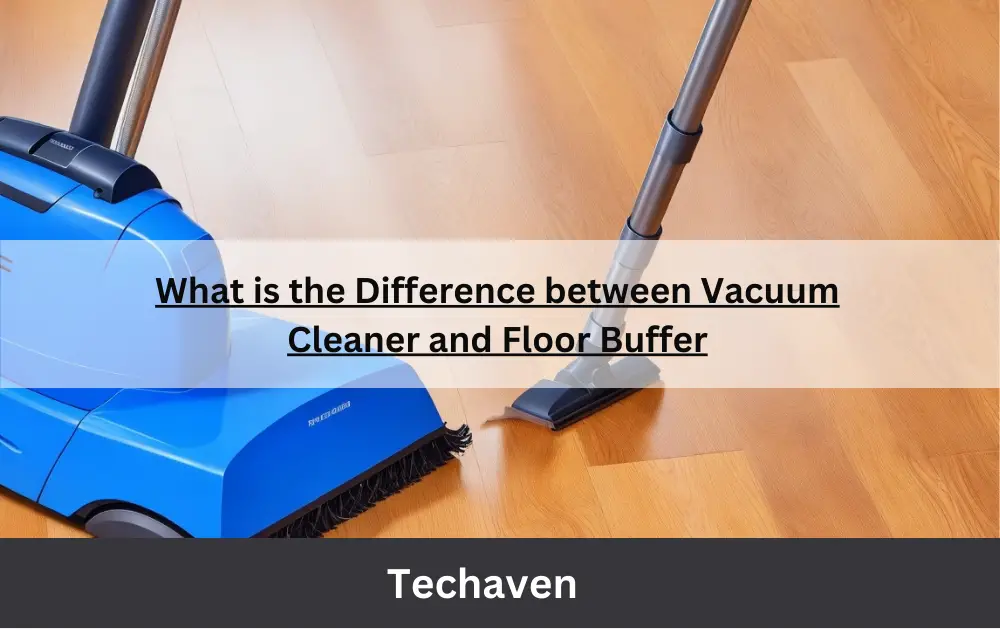Maintaining cleanliness and hygiene in our homes and offices is of utmost importance. Two common devices used for this purpose are vacuum cleaners and floor buffers. While both these devices help maintain clean and tidy spaces, they serve different purposes and come with unique features. This article aims to provide an in-depth understanding of vacuum cleaners and floor buffers, their functionality, cleaning abilities, operation and maintenance, advantages and disadvantages, and application areas. We will also discuss the cost and accessibility of both devices, helping you make an informed decision when choosing the right cleaning equipment for your needs.
Definition of a Vacuum Cleaner
A vacuum cleaner is an electrical appliance designed to remove dirt, dust, and debris from various surfaces, such as carpets, upholstery, and floors, by using suction power. Vacuum cleaners come in different shapes and sizes, catering to various cleaning requirements and preferences.
Definition of a Floor Buffer
A floor buffer is a cleaning machine used to polish and maintain hard floor surfaces such as wood, marble, and tile. It works by using rotating brushes or pads to buff and shine the floor, effectively removing stains, scratches, and other imperfections.
Overview of the Differences Between the Two
While vacuum cleaners primarily use suction to remove dirt and debris from surfaces, floor buffers rely on mechanical action to polish and maintain hard floors. Both devices have their unique benefits and are suitable for different cleaning tasks.
Functionality of a Vacuum Cleaner
How a Vacuum Cleaner Works
A vacuum cleaner works by creating a partial vacuum using an electric motor that drives a fan, which in turn generates suction power. This suction force is used to lift dirt and debris from surfaces and trap them in a filter or dust container, preventing them from re-entering the environment.
Types of Vacuum Cleaners
There are several types of vacuum cleaners available, including:
- Upright vacuum cleaners: These stand-up vacuums are ideal for cleaning carpets and have a motorized brush roll for effectively picking up dirt.
- Canister vacuum cleaners: These versatile units consist of a separate canister and wand, making them suitable for cleaning both carpets and hard floors.
- Stick vacuum cleaners: These lightweight and compact devices are ideal for quick cleanups and small living spaces.
- Handheld vacuum cleaners: Small and portable, handheld vacuums are perfect for spot cleaning and getting into tight spaces.
- Robotic vacuum cleaners: These smart devices can navigate around your home and clean floors autonomously, giving you more time for other tasks.
Benefits of Using a Vacuum Cleaner
- Efficient cleaning: Vacuum cleaners effectively remove dirt, dust, and allergens from surfaces, improving indoor air quality and hygiene.
- Versatility: Most vacuum cleaners come with various attachments and settings, making them suitable for cleaning different surfaces and materials.
- Ease of use: Vacuum cleaners are generally easy to operate and maneuver, making them suitable for people of all ages and abilities.
Functionality of a Floor Buffer
How a Floor Buffer Works
A floor buffer operates by using a motor to rotate a brush or pad at high speeds, generating friction that removes dirt, grime, and imperfections from hard floor surfaces. The machine’s weight and pressure, combined with the abrasive action of the pad or brush, effectively polish and shine the floor.
Types of Floor Buffers
Floor buffers come in various sizes and types, including:
- Rotary floor buffers: These machines use a single, large rotating pad or brush to clean and polish floors.
- Orbital floor buffers: These devices have a rectangular pad that moves in an oscillating motion, providing more targeted cleaning and polishing.
- High-speed burnishers: These machines are designed for polishing floors to a high shine and typically operate at higher speeds than standard floor buffers.
Benefits of Using a Floor Buffer
- Improved appearance: Floor buffers can restore the shine and luster of hard floors, making them look new and well-maintained.
- Deep cleaning: The mechanical action of floor buffers effectively removes stubborn dirt, stains, and scratches from hard surfaces.
- Longevity: Regularly buffing and polishing your floors can extend their lifespan and reduce the need for costly repairs or replacements.
Cleaning Abilities
Vacuum Cleaner’s Cleaning Abilities
Vacuum cleaners excel at removing:
- Dust and dirt from carpets, upholstery, and hard floors
- Pet hair and dander
- Small debris such as crumbs and sand
Floor Buffer’s Cleaning Abilities
Floor buffers are effective at:
- Removing stains, scuffs, and scratches from hard floors
- Polishing and shining hard surfaces
- Stripping and refinishing floors
Areas Each Device is Suitable For
- Vacuum cleaners are suitable for cleaning carpets, upholstery, and hard floors, while floor buffers are designed specifically for maintaining and polishing hard floor surfaces.
- Vacuum cleaners areideal for residential settings, whereas floor buffers are more commonly used in commercial and industrial environments where maintaining a polished appearance is essential.
Operation and Maintenance
Operating a Vacuum Cleaner
Vacuum cleaners are generally easy to operate. Plug the device into a power source, turn it on, and use the handle or wand to guide the vacuum across the surface to be cleaned. Adjust settings and attachments as needed for different surfaces and cleaning tasks.
Operating a Floor Buffer
Operating a floor buffer requires more skill and experience compared to a vacuum cleaner. Before using a floor buffer, ensure that the floor is clean and free of debris. Choose the appropriate pad or brush for the task and attach it to the machine. Turn on the floor buffer and gently guide it over the surface using a side-to-side motion. Apply even pressure and maintain a steady pace for consistent results.
Maintaining a Vacuum Cleaner
Regular maintenance of a vacuum cleaner includes:
- Emptying the dust container or replacing the vacuum bag when full
- Cleaning or replacing filters as needed
- Checking belts and brush rolls for wear and tear, replacing them if necessary
- Inspecting hoses and attachments for damage or blockages
Maintaining a Floor Buffer
Maintenance tasks for a floor buffer include:
- Cleaning and replacing pads or brushes as needed
- Checking and lubricating bearings and other moving parts
- Inspecting power cords and switches for damage
- Ensuring the machine is clean and free of debris after each use
Advantages of Vacuum Cleaners
- Efficient at removing dirt, dust, and allergens from various surfaces
- Versatile and suitable for many cleaning tasks
- Easy to use and maneuver
Disadvantages of Vacuum Cleaners
- Limited effectiveness on hard floor surfaces compared to floor buffers
- May require frequent maintenance, such as emptying dust containers or replacing bags
Advantages of Floor Buffers
- Effective at deep cleaning and polishing hard floor surfaces
- Can improve the appearance and longevity of floors
- Suitable for commercial and industrial settings where a polished appearance is essential
Disadvantages of Floor Buffers
- Not suitable for cleaning carpets or upholstery
- Requires more skill and experience to operate
- Tend to be more expensive and cumbersome than vacuum cleaners
Cost and Accessibility
Vacuum Cleaners
Vacuum cleaners are generally affordable and widely available, with prices ranging from $50 for basic models to over $1000 for advanced, feature-rich devices. Robotic vacuum cleaners tend to be more expensive, with prices starting at around $200 and going up to $1000 or more.
Floor Buffers
Floor buffers are more expensive than vacuum cleaners, with pricing starting at around $300 for basic models and reaching several thousand dollars for commercial-grade machines. However, the cost of ownership can be justified by the improved appearance and extended lifespan of hard floors

